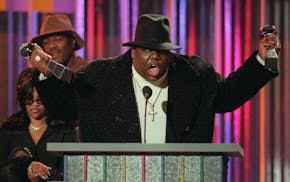One by one, they approached the microphone, their voices shaking with emotion.
Choking back tears, a woman said neighborhood children could be exposed to the "emotionally disturbed kids" moving in near her home. Another speaker raised the specter of a "media-driven suicide" in which children "kill other people and kill themselves."
The source of their anxiety was not a prison or a home for violent youths. It was a day treatment program for children suffering from mental illnesses as common as depression and hyperactivity. With emotions boiling over, the Golden Valley City Council rejected the plan on Feb. 7 by a vote of 3-2.
The fear and hostility on display in Golden Valley this month underscore the challenge facing state officials as they labor — under federal court pressure — to provide better, more independent treatment settings for thousands of disabled and mentally-ill Minnesotans under state care.
"There is a mob mentality that is keeping a lot of these projects from moving forward," said Roberta Opheim, the state ombudsman for Mental Health and Developmental Disabilities.
Even seemingly innocuous projects, such as group homes for children with autism, have come under fierce attack from local homeowners. These conflicts are likely to grow in number and intensity as state and local agencies move to expand efforts to treat more people in community settings, such as group homes, rather than in institutions, disability advocates warn.
The magnitude of the dilemma is all too visible at the Anoka-Metro Regional Treatment Center, a state-run mental hospital. There, nearly three of 10 beds are occupied by patients who do not need to be there but have nowhere else to go.
"One of the main things we are trying to do is to give people more choice, so they can live as close to the mainstream communities as possible," said Human Services Commissioner Lucinda Jesson. "But it's hard to move people into these communities if those communities are not welcoming."
'Pitchforks'
Christopher Onken still has a photo of the rock that shattered the sliding-glass door at the Centerville house that his firm, Zumbro House Inc., had planned to turn into a group home for teens with developmental disabilities. He also remembers the angry crowd holding signs saying, "No to Zumbro!" who gathered at a community meeting in 2009.
"From the very beginning, there were people [in Centerville] who were intent on making it known that we were not welcome," Onken said.
As workers started to renovate the house, rumors circulated that sex offenders, juvenile offenders or people classified as "mentally ill and dangerous" would move into the home, located in an affluent neighborhood of Centerville. At a community meeting, residents raised concerns that the group home would hurt their property values.
Zumbro House, which has 19 programs in the Twin Cities area, ultimately decided to pull the plug after spending about $400,000 to buy and renovate the two Centerville homes.
Onken said he "still has misgivings" about his decision, but said he had to weigh the safety of his young clients.
"We knew that it was going to be a pitchforks-and-torches kind of environment," said Onken, president of Zumbro House. "It would not have been fair to the adolescents living there."
The Department of Human Services faced a similar backlash in the summer of 2012, when it proposed a group home in rural Nokay Lake Township, near Brainerd.
Though the home was intended for adults with mental disabilities, residents became alarmed when they saw construction crews installing reinforced doors and windows on the remote house, said Rep. John Ward, DFL-Baxter. As in Centerville, rumors began circulating that the facility would house potentially violent people.
"First, it was sex offenders were moving in, then it was criminals, then the mentally ill and dangerous," Ward said. "No one could get any answers so the speculation got out of control."
Those fears boiled over at a public meeting at the Crow Wing County courthouse, where residents let out audible gasps as a DHS official described the project. One local resident asked, "Can you guarantee that there isn't going to be violent people living there in two years or six months? And if they do, and they come busting in my house, what am I supposed to do?"
Court ruling
Though the Nokay Lake group home eventually opened, the controversy underscores a pressing legal and financial challenge for Minnesota.
In 1999, the U.S. Supreme Court ruled in a case, known as Olmstead vs. L.C., that segregation of people with disabilities violates federal law, and that states must deliver services in the most integrated setting possible. Disability rights advocates have compared the ruling to Brown vs. Board of Education, the 1954 case that banned segregation in public schools.
Last fall, Minnesota officials unveiled an ambitious blueprint, known as an "Olmstead plan," for implementing the federal ruling. The 131-page plan calls for increasing the state's stock of affordable housing for people with disabilities by 10 percent a year and dramatically reducing unnecessary hospitalizations at the Anoka treatment center, among other proposals.
The case of mentally ill children is particularly acute. Statewide, only 39 percent of counties have residential treatment services for children with mental illnesses. In some rural areas, treatment beds for children are up to 200 miles away from families and have up to 60-day waiting lists for admission.
As one Twin Cities nonprofit recently found, community resistance can be overcome through aggressive, grass-roots organizing.
For six months, Martha Lantz, the executive director of Minneapolis-based Touchstone Mental Health, tried to locate an assisted-living facility for adults with mental illnesses in the suburbs, but she was repeatedly spurned by local officials who claimed they did not need the services in their communities.
"It was 'NIMBY' in a more subtle way," Lantz said.
Undeterred, Lantz turned to the Seward neighborhood of Minneapolis, where she would spend the next two years hearing concerns from local residents. She met with local clergy, attended house parties, and even hosted a yoga event at Matthews Park. The 40-bed facility was ultimately approved and opened in June.
"The social worker in me says, 'What a shame that we have to educate folks who are terrified of people with mental illness,' " Lantz said. "But the hard work definitely paid off in the end."
Commissioner Jesson said public officials and care providers need to connect with people's own experiences, and not discuss mental illnesses and disabilities as if they belong to a remote minority. More than 1 in 5 Minnesotans has a disability, and about 1 in 4 has a mental illness, according to state and national data.
"Unless we are really in denial, we all know these people," she said. "If we want them to get help, we need to have a community that's open to that."
Chris Serres • 612-673-4308

ABBA, Blondie, and the Notorious B.I.G. enter the National Recording Registry
West Virginia transgender sports ban discriminates against teen athlete, appeals court says
Dr. Martens shares plunge to record low after weak US revenue outlook
Visa fees for international artists to tour in the US shot up 250% in April. It could be devastating

